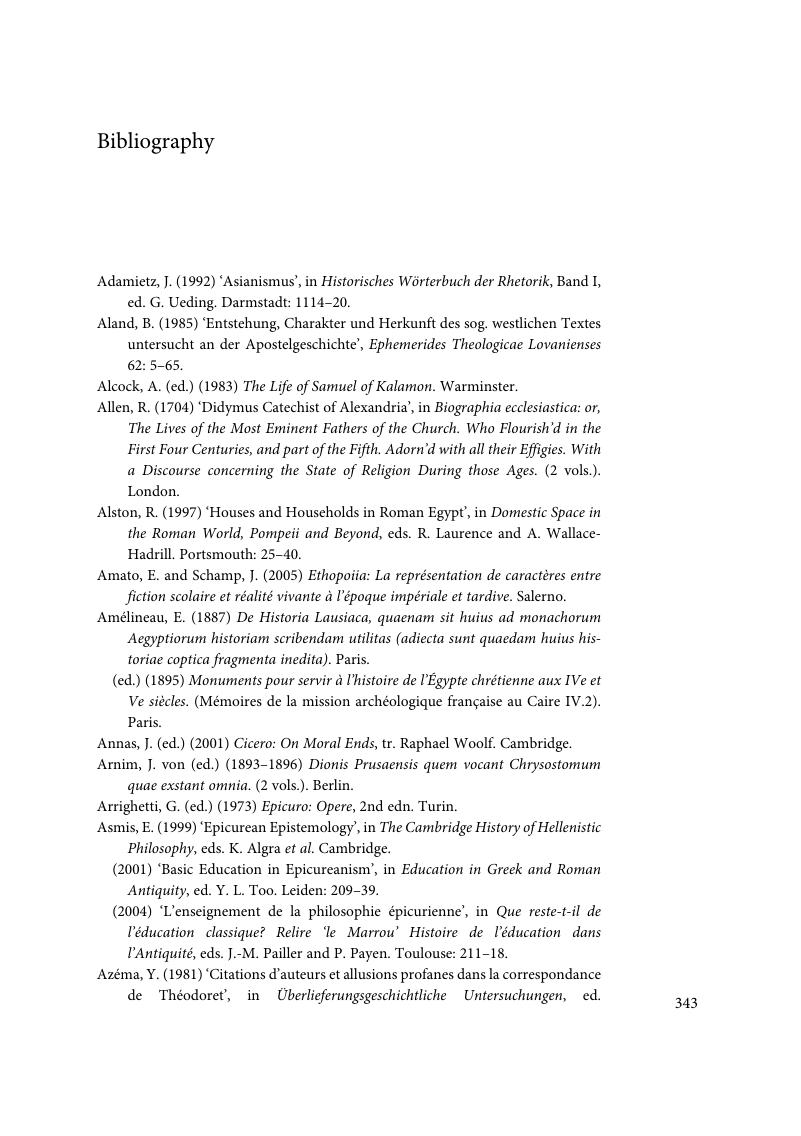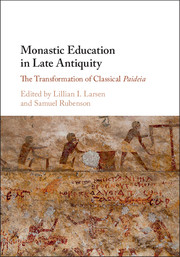Book contents
- Monastic Education in Late Antiquity
- Monastic Education in Late Antiquity
- Copyright page
- Contents
- Figures
- Contributors
- Acknowledgements
- Introduction
- Part I The Language of Education
- Part II Elementary Education and Literacy
- Part III Grammar and Rhetoric
- Part IV Philosophy
- Part V Manuscript and Literary Production
- Bibliography
- Index
- Index Locorum
- References
Bibliography
Published online by Cambridge University Press: 04 August 2018
- Monastic Education in Late Antiquity
- Monastic Education in Late Antiquity
- Copyright page
- Contents
- Figures
- Contributors
- Acknowledgements
- Introduction
- Part I The Language of Education
- Part II Elementary Education and Literacy
- Part III Grammar and Rhetoric
- Part IV Philosophy
- Part V Manuscript and Literary Production
- Bibliography
- Index
- Index Locorum
- References
Summary

- Type
- Chapter
- Information
- Monastic Education in Late AntiquityThe Transformation of Classical <I>Paideia</I>, pp. 343 - 379Publisher: Cambridge University PressPrint publication year: 2018

